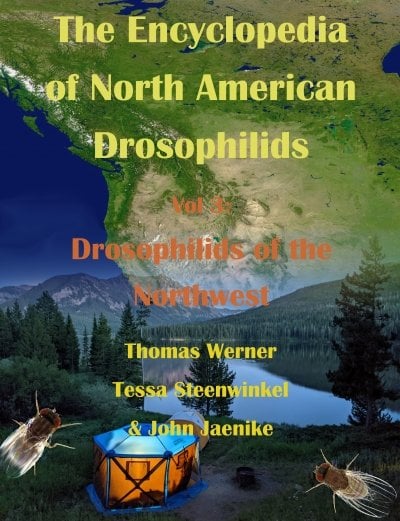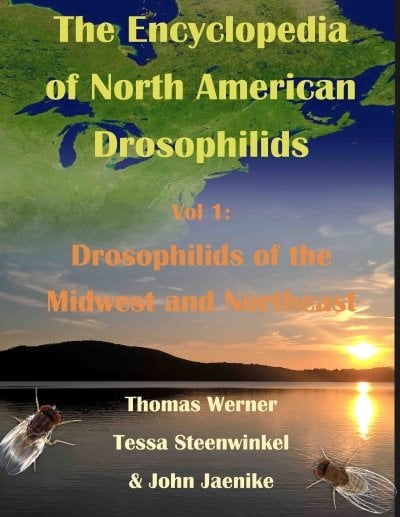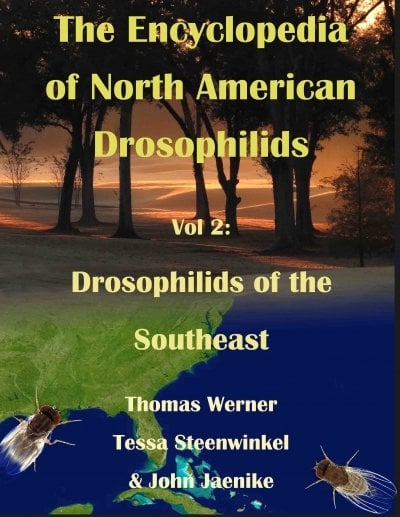Thomas Werner

Contact
- twerner@mtu.edu
- 906-487-1209
- Dow 523 (Use Dow 740 for shipping items)
- Professor of Genetics and Developmental Biology, Biological Sciences
- PhD, Umea University, Sweden, 2005
Scientific Background
Dr. Werner became interested in the question "What is life?" as a four-year old child in his parent's garden in former East Germany. At the age of 10, he began to develop a life-long interest in the biology of butterflies and moths. He has been breeding and collecting them ever since. For his Master's thesis, he decided to shift his focus to molecular biology because this was a newly emerging field of biology that promised new jobs.
Thus, Dr. Thomas Werner studied the human heart disease-causing virus Coxsackie B3 at the molecular level at Friedrich-Schiller-University Jena in Germany. After the fall of the Berlin Wall, Dr. Werner made one of his childhood dreams become true and moved to Sweden. He spent seven years in Umeå, working on his Ph.D. thesis about the innate immune response in the fruit fly Drosophila melanogaster.
During this time at Umeå University in Dr. Dan Hultmark's lab, he discovered and described a new family of immune genes that we humans share with flies and many other animals. In 2005, Dr. Werner shifted his research focus towards evolution of development (evo-devo) and worked as a postdoctoral fellow at the University of Wisconsin-Madison in Dr. Sean B. Carroll's lab, where he established the fruit fly Drosophila guttifera as a new transgenic model organism to investigate how complex animal color patterns evolve.
Summary Vitae
Very broadly defined, Dr. Thomas Werner is an entomologist working on different biological questions in drosophilids ("fruit flies") and lepidopterans (butterflies and moths). One quarter of his research is published in the journals: Nature, Science, Cell, and PNAS. Werner has received more than $900,000 in total funding, most of which came from the NSF and NIH. He research-mentored 107 undergraduate and 7 graduate students. He was bestowed with the state-wide Michigan Distinguished Professor of the Year Award 2021. Dr. Werner also won Michigan Tech's Distinguished Teaching Award twice (only three other faculty won it twice in the history of Michigan Tech) for teaching Genetics, Immunology, Genomics, and Developmental Biology. He also discovered a new fruit fly species, which he named after his student Tessa Steenwinkel, who won 9 research awards (e.g., the Barry Goldwater Fellowship and the NSF Graduate Research Fellowship) and published 15 articles/books under his mentorship. The species is called Amiota tessae. Furthermore, Dr. Werner is the founder of the open-access book series "The Encyclopedia of North American Drosophilids", which serves the Drosophila research community, teachers, and students with currently two published volumes and nearly 10,000 worldwide downloads. These books transformed two campus libraries (U. of Rochester, NY and Michigan Tech) into open-access book publishers, promoting science and education at no cost.
Research Project 1: The evolution and development of complex animal color patterns in Drosophila
Animal color patterns such as zebra stripes, leopard spots, and the myriad variants of butterfly wing color patterns are known to play important ecological and physiological roles in the life of animals and are crucial for the survival of species. Scientists first tried to solve the secret of animal color patterns with mathematical approaches to find models that could explain how these patterns developed. In 1952, Turing, the inventor of the computer, proposed the famous reaction-diffusion model in which a short-range acting activator molecule diffuses from a source to stimulate color production, while a long-range acting inhibitor molecule prevents pigmentation. Using the spectacularly ornamented fruit fly Drosophila guttifera, we identified that the Wingless morphogen had evolved a new function in this species by activating the yellow gene, causing many black melanin spots to appear on the wings. Humans also have the wingless gene, which is a known proto-oncogene (called Wnt-1). Wnt-1 is overexpressed in many tumors, which causes the tumors to proliferate. We are currently investigating if the color patterns on the abdomen and thorax of Drosophila guttifera are generated by the same pathway as on the wing, or if other proto-oncogenes have evolved a link to pigmentation. Elucidating the pigmentation pathways in this fruit fly can help us understand how cancer-inducing pathways are regulated and how they have evolved.
Research Project 2: The evolution of mushroom poison (alpha-amanitin) resistance in Drosophila
Just one Death Cap or Destroying Angel mushroom contains enough toxin to kill a person. Alpha-amanitin is the principal toxin in these deadly-poisonous mushrooms. However, poisonous mushrooms generally contain a mixture of different toxins that target various tissues. Because alpha-amanitin targets the RNA-polymerase II and renders it non-functional, almost all eukaryotic organisms are very sensitive to this toxin. Only a handful of organisms on the planet can eat these mushrooms and survive without harm. Some Drosophila species belong to the resistant organisms. Interestingly, their RNA-polymerase II is highly sensitive to the toxin. Thus, there must be detoxification and/or excretion mechanisms that allow these flies to consume these mushrooms, so that the toxins don't get to their targets. Being able to eat poisonous mushrooms both provides a unique niche in the eco-system and also kills parasites that would otherwise render the flies sterile. The main goal of Dr. Werner's research is to elucidate the molecular-genetic mechanisms that cause alpha-amanitin resistance in Drosophila.
Research Project 3: The Encyclopedia of North American Drosophilids
The project started in the fall of 2012, with the first book published in the spring of 2017. The books strive to facilitate the identification of the drosophilid species ("fruit flies") of the North American mainland and summarize the current knowledge about every species with remarks on interesting aspects of their biology and suggestions for future research on them. The books are intended for researchers, teachers, and students wishing to discover the diversity of these flies. A total of four volumes are planned:
Volume 1: The Drosophilids of the Midwest and Northeast (Version 1 - 2017, Version 2 - 2018, Version 3 - 2020)
Volume 2: The Drosophilids of the Southeast (Version 1 - 2020)
Volume 3: The Drosophilids of the Northwest (estimated publication: 2025)
Volume 4: The Drosophilids of the Southwest (estimated publication: 2030)
Book 1 of 3:
Book 2 of 3:
Book 3 of 3:

Drosophilids of the Northwest
by Thomas Werner, Tessa Steenwinkel, and John Jaenike
Coming soon!
Links of Interest
Research Interests
- Evolution
- Genetics
- Toxicology
- Developmental Biology

